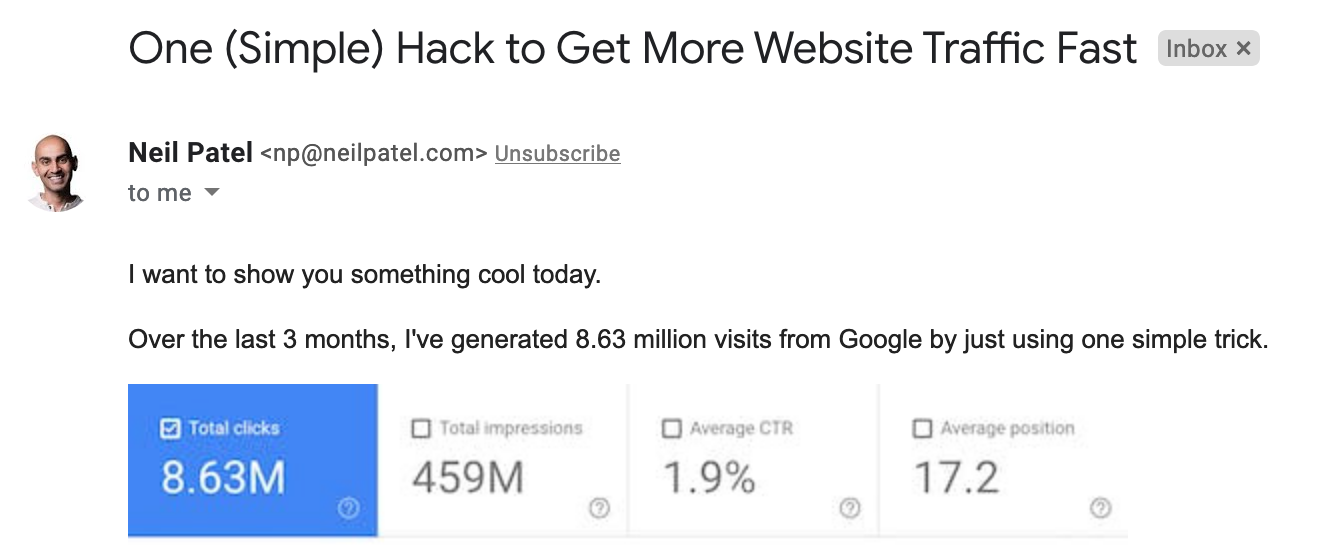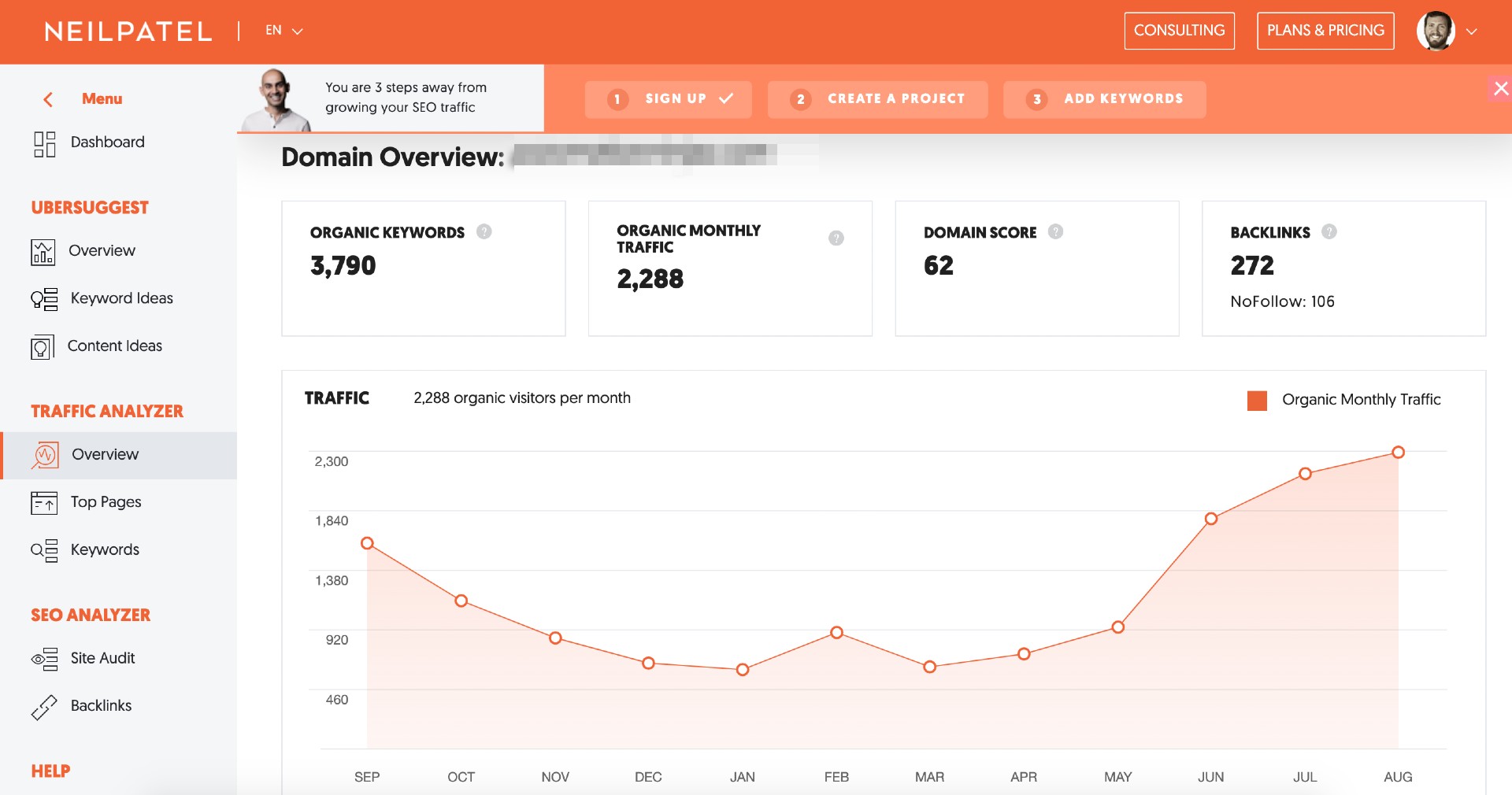The other day my friend Brett Fairbourn forwarded me an email from Neil Patel, showcasing a simple trick that helps you tap into your competitor’s traffic.
When SuccessCon’s 2019 Ultimate Marketer of the Year says “This is some of the best, most simple and immediately applicable SEO/content marketing advice I’ve ever seen”, I figured I’d better pay attention.
Here’s the deal:
UberSuggest is a tool that Neil Patel offers designed to help you track and measure the performance of key metrics across specific sites. They have a paid version, but for this tactic you can start with the free tier (you can upgrade later if you want).
Once you’ve signed up you can type in the URL of a website you want to analyze.
You can check your own first if you’d like, but ultimately the goal here is to spy on your competitors site, and see what keywords are sending people their way.
The goal here is generally to choose a competitor who is getting more traffic than you are – so that you can create content that competes for the keywords that they’re winning.
So, once you’ve analyzed their domain, the next step is to click into their ‘top pages’, which is an option on the left hand side in UberSuggest.
This should take you to a report that looks like this:
From there, you can click into specific pages and see which keywords people searched that led them to that page.
Remember, the goal for this part is not just finding the highest performing pages, but finding ideas for content you can create that would attract people searching those same terms.
Anyway – enough preamble, Brett was kind enough to provide a step-by-step overview of this whole process as he applied it for his company, CrewTracks.
Take a look:
Simple enough, right? (You can tweet a thank you to Brett here.)
K – next steps:
- Get started with UberSuggest here.
- Spy on a few of your competitors.
- Create killer content that capitalizing on keywords you know are already performing.
This might feel obvious, but remember that you really only want to target traffic that you can serve.
And remember – in addition to targeting people who are already a fit, you can also focus on creating your own customers.
So, pick keywords that fit within the products and services you offer, and create content that is genuinely useful for people who might be searching those terms.
Google prioritizes the user experience, so at the end of the day you want to make sure you’re focusing on producing rich and valuable content.









Great content Brett! I actually came across that same article from Neil just a few days ago as well and thought it was really well done. You’ve inspired me to take more action!
Ha! Just seeing this for the first time today. Glad you made this a blog post, Greg!
I’m glad too – and actually, until the earlier today I had forgotten about the “clever” twitter CTA at the bottom.
I second that, thanks Greg. You are A-L-W-A-Y-S delivering value.